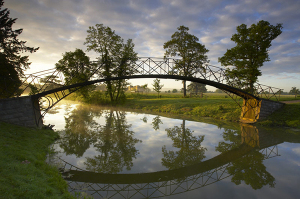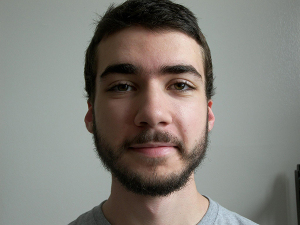This August, Royal Oak sent 2015 Horan Fellow Justin Kegley to England, where he’s working with the National Trust in using cutting-edge drone photography to document the Capability Brown landscapes in the Trust’s care. The footage will ultimately be used in conjunction with next year’s 300th anniversary celebration of Brown’s birth.
Capability Brown is legendary for his work on the English countryside, creating breathtaking scenery at places like Croome Court, Stowe and more. Justin’s work will enrich the National Trust’s understanding and celebration of these special places by capturing their majesty from new perspectives.
We talked to Justin in a brief break from his film making to discuss his interest in landscapes, his thoughts on Drone cinematography, and why this unique prize captured his attention.
To learn more about the Horan Prize, click here. Support Royal Oak’s scholarship efforts today! Donate Now
The Royal Oak Foundation: What made you apply for the Horan Prize?
Justin Kegley: I was very fortunate to grow up in a part of the world that took land conservation very seriously. My parents’ house abutted a state forest, so before I ever had an interest in making films or videos, I was building stick forts in the woods and camping with the Boy Scouts. I find my work in video production and editing very stimulating and fulfilling, but often it involves a lot of time spent at a desk, either writing or editing. I tried to balance my interests by working in landscaping and property management to pay for my degree in film production. So the call for submissions for this year’s Horan Prize caught my eye because it sought an applicant with a very unusual blend of interests. It required both an interest in land preservation as the mission of the National Trust, and also a proficient, adaptive set of skills in video production. I knew that if I had the good fortune of receiving the fellowship, I would have a steep learning curve in the world of English landscape gardens, but I was also very excited about the opportunity to bring both of my major disciplines to the table, instead of just one or the other.
It makes me smile to think that I very nearly did not apply for the fellowship. I was soon-to-be married within a few weeks, and I thought I could not in good conscience fly to the UK after being newly married for less than two months. However, my dear wife soon heard about the fellowship and insisted that I apply for the opportunity, against her instinct to have me working close to home. The rest is history.
ROF: What do you expect to learn about drone photography? Why do you believe drone photography can be important?
JK: In my first week in the UK, I have assisted on one day of drone video flights, and already I have learned so much. My favorite moments have been when the operator takes the drone off from the ground and hovers it for just a moment in the air, at eye level. When it is on the ground or high in the air, it is only a machine, but at eye level with you, you sense that you are meeting the gaze of a new but very important figure on the world stage. As citizens of a shrinking world, we must take care to steward this technology responsibly by using it to innovate creatively. For example, I visited the workshop of the company that built one of the Trust’s drones, and for a bioengineering firm they constructed a drone that uses a compressed-air gun to fire seeds into the ground from above. Their goal is to plant a billion trees a year. How imaginative! I am pleased to be working on a project that documents not only the Trust’s historical resources, but also an innovative and inspiring use of a new technology.

Croome Park was Capability Brown’s first complete landscape design. Justin is capturing the landscape at numerous Capability Brown sites.
ROF: You have lots of landscaping experience to complement your video production experience – how do you think these tools can be used together?
JK: Both disciplines have helped me to think in terms of three-dimensional space being reduced to two-dimensional images. Visiting a National Trust site is enjoyable for me because I enjoy being outside, but how do I convey that sense of three-dimensional space in a two-dimensional visual medium? That is the current challenge of this video project. These sites were designed to be experienced in person, but of course we are trying to use video and other two-dimensional tools to invite people to visit them. Most people’s minds are constantly saturated with images, so I think creatively communicating that sense of presence makes people sit up and take notice, and I hope we can do that with these videos.
ROF: Beyond the Capability Brown sites that are part of your fellowship, what National Trust properties are you most excited to visit?JK: Aside from the opportunities to film at the Capability Brown properties, I look forward to the opportunities to explore more of the country while I am here, and I’ve been told that Dover should be a high-priority weekend visit.
ROF: Is there anything else you’d like to say to Royal Oak supporters?
JK: Only a few months ago, I never would have anticipated such an opportunity for cultural exchange and technological creativity. Thank you, thank you, thank you for your interest and support!
Learn more about the Horan Prize and support Royal Oak Scholarships. Donate Now




